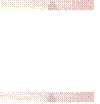
Classifying Galaxy Morphology with MatLab
Abel B. Diaz Michael S. Pate Ronald Wilhelm
Abel B. Diaz Michael S. Pate Ronald Wilhelm









•We are using MatLab to automate galaxy
classification
by extracting the ‘shapes’ of galaxies
•The galaxies used were elliptical, irregulars
and face-on
spirals, all large in spatial extent
•We present preliminary results for our method
as well as
preliminary results for galaxies of lower
resolution

Introduction

Why Classify
vGalaxy Morphology in
Rich Clusters: Implications for
the Formation and evolution of Galaxies, Dressler, A. 1980
vFaint galaxy counts as
a function of morphological type
in a hierarchical merger model, Baugh, C. M. et
al. 1996
vColor Separation of
Galaxy Types in the Sloan
Digital Sky Survey Imaging Data,Strateva et al. 2001
Morphology classification
provides a direct approach to
probe galaxy populations
back to an early stage in their
lifetime, and hence to
study many astrophysical
problems such as
large-scale structure, galaxy formation
and galaxy evolution.
Current
Methods
Most
current morphology methods use photometric
Parameters
•concentration index
•mean surface brightness
•bulge-to-disk ratio
•color
•de Vaucouleurs exponential profiles
A
few morphology methods make use of the ‘shape’ of
Galaxies
to determine type.
vAutomated Galaxy Morphology:
A Fourier Approach, Odewahn et al. 2002
vMorphological Classification of Galaxies using
Computer Vision and Artificial Neural
Networks:
A Computational Scheme, Goderya, S & Lolling, S
2002

Our Method
With MatLab
vPreset values: number of
profile vectors, background
star removal and graphical output
vReads in files (jpeg or
fits)
vlocates center of
image
vcreates profile vectors
(across the galaxies center) with
intensity counts
vdetermines, from the
profile vectors, if galaxy is elliptical,
irregular, spiral or barred-spiral

What is
MatLab?
MATLAB
can serve as the platform for all your technical computing needs.
It
integrates mathematical computing, visualization, and a powerful technical language. The MATLAB
product family includes tools for:
• Test and measurement
• Data analysis and exploration
• Numeric and symbolic computing
• Plotting and advanced visualization
• Signal and image processing
• Algorithm development
• Deployment of MATLAB applications
MATLAB
and its companion products are used in a broad range of applications, including
signal and image processing, DSP and control design, medical research,
finance, and earth and space exploration. For these and many other
technical applications, MATLAB gives you a trusted computing environment,
fast insights, and a competitive advantage.

More
MatLab.
The Image Processing Toolbox enables you to
restore noisy or degraded images, enhance images for improved
intelligibility, analyze blobs, and extract and analyze image data with
image statistics and transforms, as well as develop complete
solutions to challenging image processing problems that involve
multidimensional data sets.


Test
Galaxies and Results
NGC1365 (SBb)
M100 (Sc)
NGC1300 (SBb)
M91 (SBb)

NGC4449 (irregular)
M59 (elliptical)
ngc4348 (edge-on)
M74
(Sb)
NGC2967(Sc)

Resolution
Tests

M100 (original)
(less resolved)
(a lot less resolved)

Future Work
vIt was found that if we change some of the program
parameters that
some of the
incorrect galaxies would become correct and some that
were correct
become incorrect. We need to automate some of these
parameters to
adjust depending on image characteristics.
vWe need to quantify the resolution
limits to be able to determine how
faint we can go.
vFurther morphology
subdivision (spiral – Sa, Sb and Sc. Barred-spiral
SBa, SBb and SBc.) within resolution
limit
vDetermine morphology (to
high accuracy) of galaxies beyond the
resolution limit by using photometric
parameters along with shape
vPossible merging with the
procedure described in Morphological
Classification of Galaxies using Computer
Vision and Artificial Neural
Networks: A Computational Scheme, Goderya, S & Lolling, S
2002

Conclusion
üWe found, using MatLab, it
is possible to automate galaxy
morphology by ‘shape’, without photometric
parameters. These
particular results were about 80% accurate
and can be greatly
improved by changing the program.
üThis method is not limited
to SDSS data, any survey or data will
work
üThis method does have
limits from a resolution stand point.
üWe can extend this limit
by using photometric parameters in
conjunction with ‘shape’.

Contact Info
Abel B. Diaz:
abel.diaz@ttu.edu
Michael S. Pate:
michael.s.pate@ttu.edu
Ron Wilhelm:
ron.wilhelm@ttu.edu
http://www.mathworks.com/

If no arms are found it
checks average number of counts in profile vector above ~80%. If average is >
2 then it is labeled an irregular galaxy, if average is < 2 then it is labeled an elliptical
galaxy.
If armed structure are
found (traced in red) using the profile vectors the galaxy is labeled a spiral. If the
ratio of the major and minor axis is > 2 then the galaxy is labeled a barred-spiral.



Ir
Ir
sextenA
spiral (barred)
SBb
ngc4579
possibly a threshold limit in
the program is not small enough for this diffuse SB0
spiral (non-barred)
SB0
ngc4477
Ir
Ir
ngc4449
spiral (non-barred)
Sb
ngc4348
spiral (non-barred)
Sb
ngc4030
spiral (barred)
SBc
ngc309
spiral (non-barred)
Sc
ngc2967
spiral (barred)
SBb
ngc165
spiral (barred)
SBb
ngc1365
spiral (barred)
SBb
ngc1300
there is a small galaxy near by
that was used in determining if it was an irregular
Ir
SBb
ngc1097
spiral (barred)
SBb
ngc1090
spiral (non-barred)
Sa
m96
the ring structure could have
been used for bar calculation
spiral (non-barred)
SBb
m95
the spiral arms back track some
and could have been used for bar calculation
spiral (non-barred)
SBb
m91
E
E
m87
This is a questionable barred.
The bar srtucture is mostly gas not stars.
spiral (non-barred)
SBc
m83
Ir
Ir
m82
spiral (non-barred)
Sc
m74
E
E
m59
possibly couldn't separate
bulge from the arms
spiral (barred)
Sc
m51
spiral (non-barred)
Sc
m33
spiral (non-barred)
Sc
m100
comments of what caused the
incorrect type
type (program)
type
name
from www.seds.org
Summary of
Results
We found that if changes are made to the program
parameters that some of the incorrect
galaxies would become correct and some that were
correct become incorrect.
We found that the program could still find spiral
structure with low resolved images.


(resolution to low/no arms found)